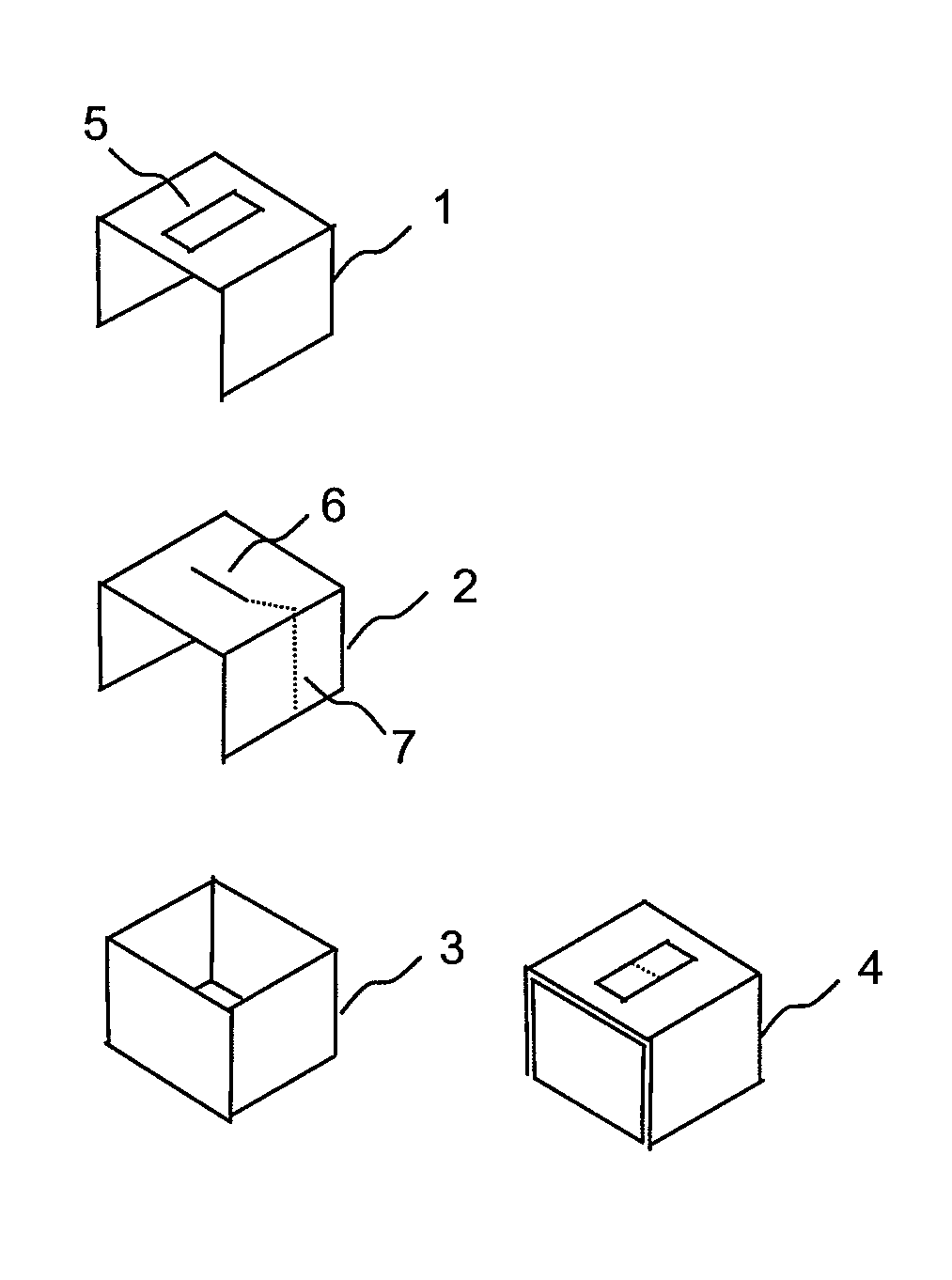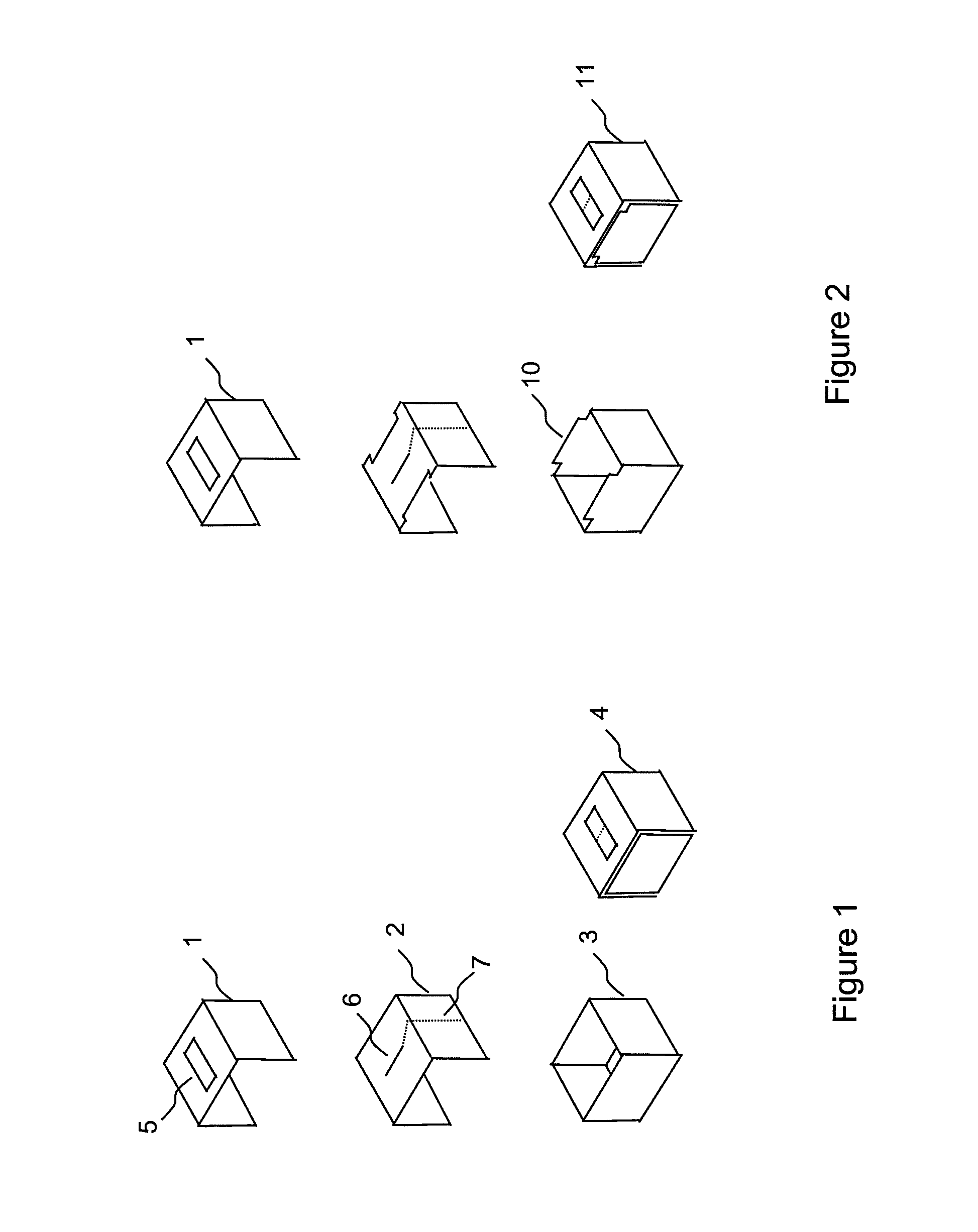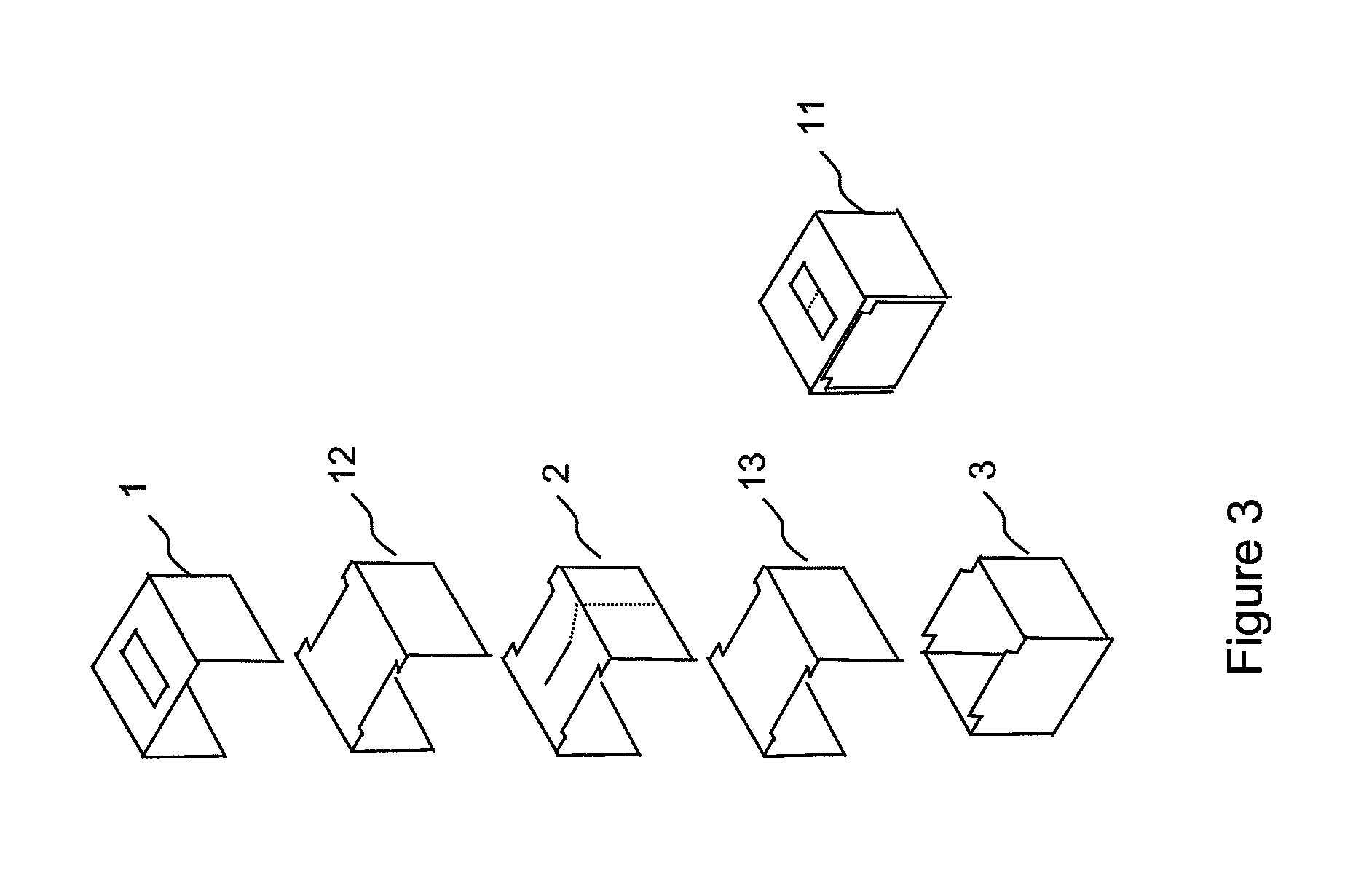Antenna
- Summary
- Abstract
- Description
- Claims
- Application Information
AI Technical Summary
Benefits of technology
Problems solved by technology
Method used
Image
Examples
Embodiment Construction
[0053]For clarity, the methods and apparatus are described in the context of an antenna system suitable for use with a cellular wireless base station. However, it is to be understood that the invention is not limited to such an application. For example, the present invention may be applied to wireless systems other than cellular systems, and the antenna elements may be used singly or as arrays of antennas in any configuration.
[0054]FIG. 1 illustrates a first embodiment of the invention, showing the construction of a single antenna element 4. An electrically conductive enclosure 3 such as a box structure comprises an open end so as to form an open cavity. An electrically conductive cover 1 is provided for the structure 3 and, when in position, the cover 1 covers the open end of the structure 3. The cover 1 can also partially or wholly cover one or two of the outer side walls of the structure. The cover has a slot 5 which is associated with the cavity of the structure 3. A feed layer ...
PUM
 Login to View More
Login to View More Abstract
Description
Claims
Application Information
 Login to View More
Login to View More - R&D
- Intellectual Property
- Life Sciences
- Materials
- Tech Scout
- Unparalleled Data Quality
- Higher Quality Content
- 60% Fewer Hallucinations
Browse by: Latest US Patents, China's latest patents, Technical Efficacy Thesaurus, Application Domain, Technology Topic, Popular Technical Reports.
© 2025 PatSnap. All rights reserved.Legal|Privacy policy|Modern Slavery Act Transparency Statement|Sitemap|About US| Contact US: help@patsnap.com



